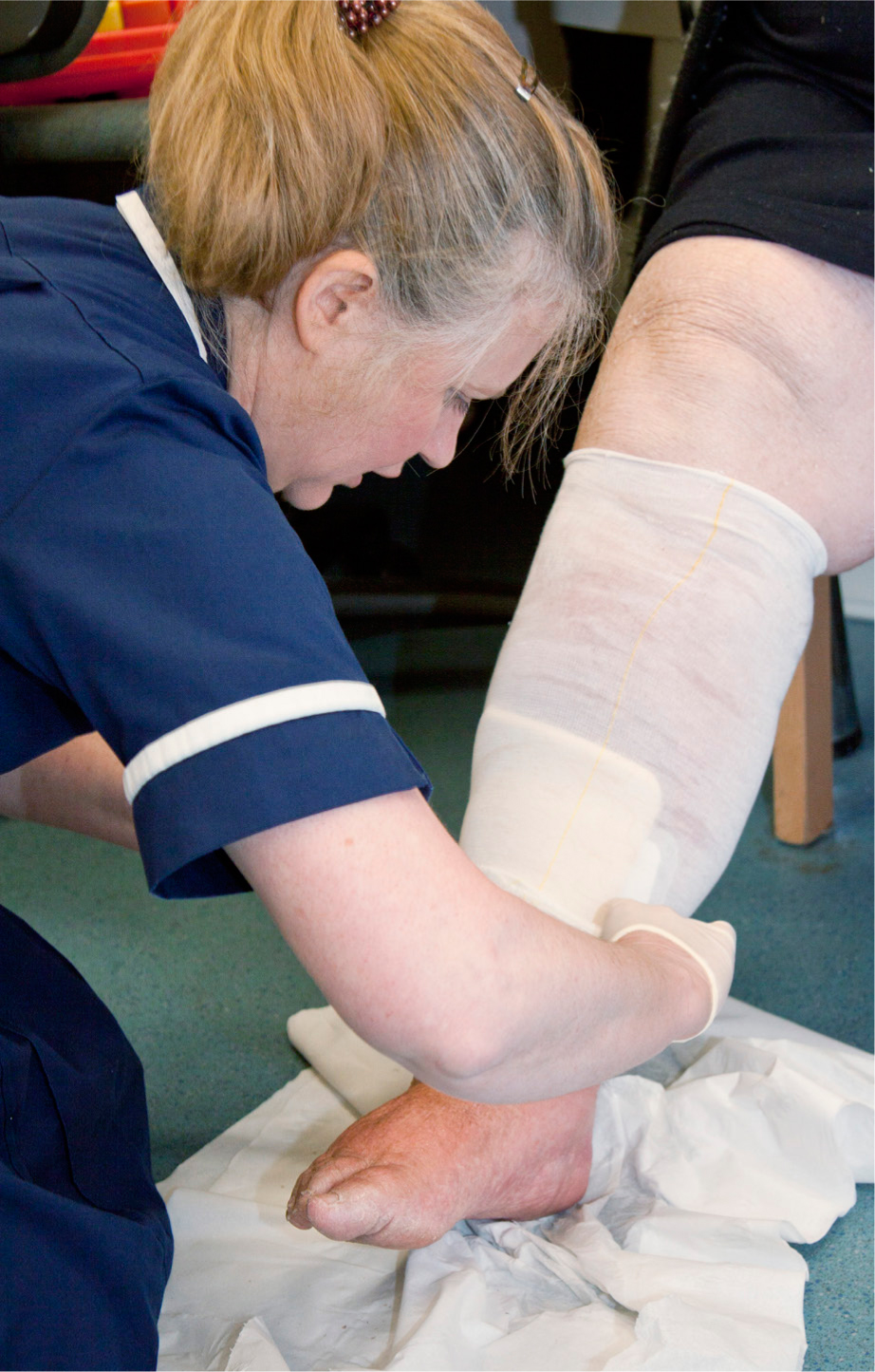Lymphoedema is a chronic and progressive disorder resulting from impaired lymphatic system function, triggering an excessive accumulation of lymph fluid in the superficial tissues, which can lead to chronic swelling, localised pain, atrophic skin changes and secondary infections (Whitaker, 2016; Kayıran et al, 2017). Lymphoedema can be primary or secondary in aetiology: the former is related to developmental abnormalities of the lymphatic system, whereas the latter is attributed to the impairment of lymphatic vessels due to an acquired condition, such as trauma, tumour, surgery or infections (Kayıran et al, 2017). To date, there is no cure for lymphoedema, and the condition is associated with impaired quality of life, both in terms of psychosocial and physiological functioning. Pain, skin tightness, heaviness, numbness and reduced range of movement have been reported, as well as altered body image, anxiety and depression (Thomas et al, 2020). Therefore, it is imperative to collaborate with a patient to create and maintain an effective management strategy.
The recommended treatment of lymphoedema is based on decongestive lymphoedema therapy, which comprises two phases: an intensive phase, combining manual lymphatic drainage (MLD), multi-layer bandages, skin care and physical exercises to reduce volume; and a maintenance phase, which consists of helping the patient to preserve the reduced volume achieved during the intensive phase for as long as possible (Mestre et al, 2017). MLD comprises certain movements of the hand that are used to stretch the skin in a specific direction and to promote variations in interstitial pressures, aiming to enhance the filling and emptying of lymph vessels (Provencher et al, 2021). These movements are slow, repetitive and usually incorporate a brief resting phase, allowing the skin to return to its initial position, with this skin stretching and resting combination reported to be effective on lymph collectors and local smooth muscles (Provencher et al, 2021). To date, MLD is cited as one of the only effective ways to facilitate lymphatic drainage and alleviate the pain and swelling associated with lymphoedema, but the evidence behind its frequent recommendation is uncertain. To ensure optimal benefit to patients, the lymphoedema practitioner must be cognisant of the advantages and limitations of MLD, as established in the literature.

Addressing the efficacy question
Most studies on the efficacy of MLD have shown mixed results; although some report improvement in the metric in question, it is often not statistically significant, and results vary between studies. Individual studies often demonstrate the benefits of MLD, but systematic reviews and meta-analyses, with their wider scope, seem to throw its frequent use in clinical practice into question.
An example would be Barbieux et al (2023), who, via lymphoscintigraphy (a diagnostic imaging modality in which a small amount of radioactive colloidal tracer is injected into the patient to map their lymphatic system), assessed the effect of skin mobilisation, nonspecific massage and MLD on the root of the lower limb in 80 patients with lower limb lymphoedema. In this study, it was demonstrated that, at the end of the protocol, 6.3% (5/80) of the cases showed the maximum number of new lymphatic pathways after injection site stimulation; 11.3% (9/80) showed the maximum number of new lymphatic pathways after nonspecific massage; and 75% (60/80) showed the maximum number of new lymphatic pathways after MLD (Barbieux et al, 2023). Similarly, Kasseroller and Brenner (2024), in their pooled re-analysis of the data gained during an initial randomised controlled trial (RCT), confirmed that a strict therapy regime in a 3-week decongestion phase in patients with breast cancer-related lymphoedema (BRCL) led to a significant volume reduction of almost 10% of the initial volume. However, in this instance, the authors could not provide conclusive evidence that this reduction could be definitively attributed to MLD, but acknowledged that other elements of decongestive therapy could be responsible, such as compression bandaging or exercise.
In comparison, Xing et al's (2023) analysis of seven systematic reviews and meta-analyses found that, while the overall results indicated that MLD for BCRL might reduce lymphoedema volume, the effects were not well-established. Therefore, the authors could not recommend the addition of MLD to complete decongestive therapy or compression therapy for patients with BCRL, as MLD treatment appeared to be only an ambiguous but potentially effective BCRL treatment. Similarly, in their systematic review and meta-analysis of 10 RCTs, Lin et al (2022) reported statistically significant improvements in the incidence of lymphoedema and pain intensity following MLD, but did not report any statistically significant effects on volumetric changes and quality of life. De Vrieze et al's (2022) multicentre, three-arm RCT, conducted at five hospitals in Belgium with 194 participants with unilateral chronic BCRL, in which participants were randomised to receive either fluoroscopy-guided MLD (n=65), traditional MLD (n=64) or placebo MLD (n=65) alongside standard decongestive therapy, demonstrated interesting results. Excess lymphoedema volume decreased after 3 weeks of intensive treatment in each group: 5.3 percentage points of percent excessive volume (representing a relative reduction of 23.3%) in the fluoroscopy-guided MLD group; 5.2% (relative reduction 20.9%) in the traditional MLD group; and 5.4% (relative reduction 24.8%) in the placebo MLD group (De Vrieze et al, 2022). However, no clinically significant differences in volume reduction were found between the groups. This raises the question of what effect the placebo MLD had; in this group, deep massage was performed, with relaxing transverse movements of the ipsilateral neck, back, shoulder, arm and hand muscles (De Vrieze et al, 2022; Kasseroller and Brenner, 2024).
Conclusions
A common conclusion of many studies on the effects of MLD is that well-designed RCTs with a larger sample size are required to make definitive conclusions, as the evidence is contradictory. While MLD may not be especially effective on its own, it seems to have limited value as an addition to other elements of decongestive therapy, and does not appear to trigger any adverse outcomes when performed by a skilled practitioner.


